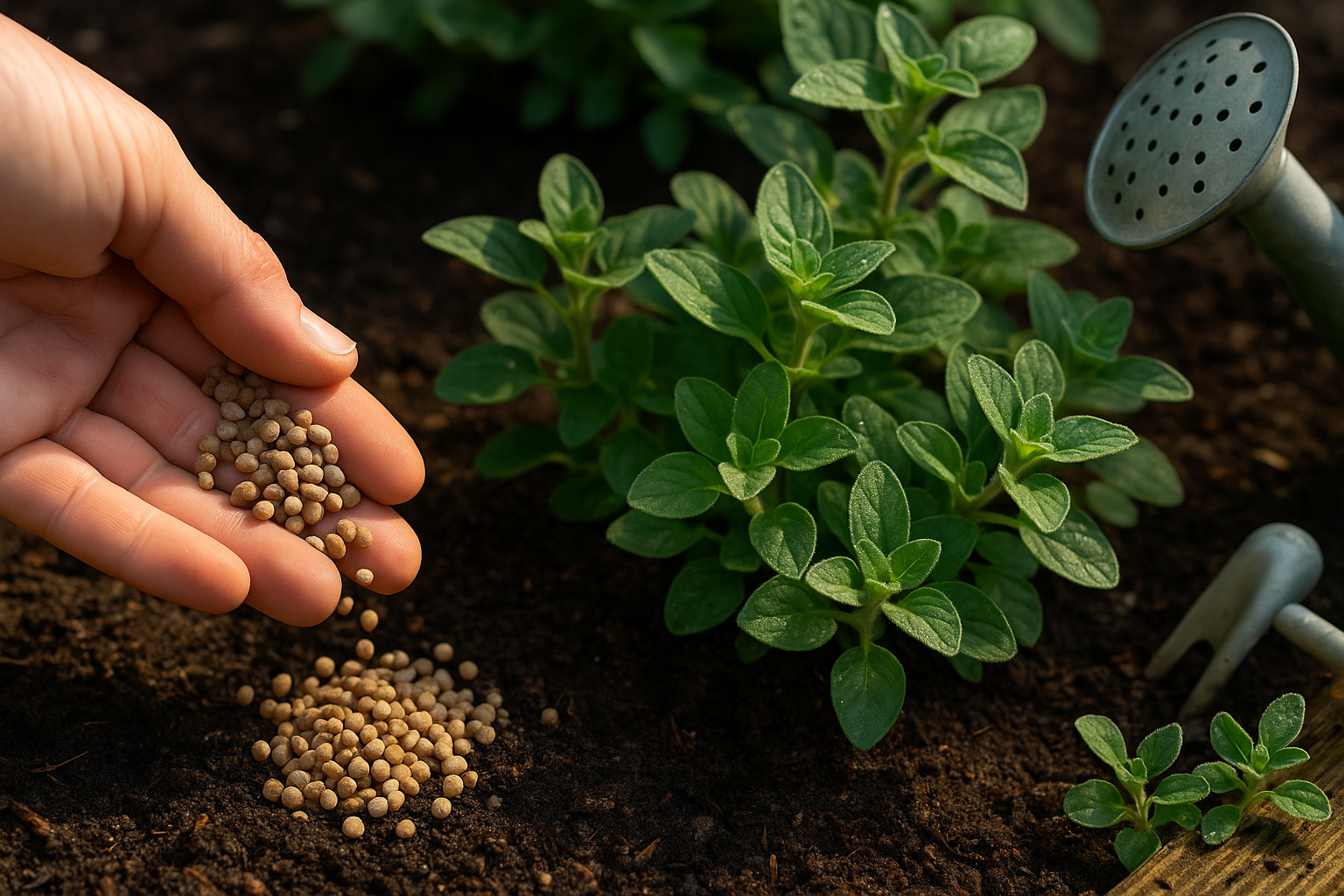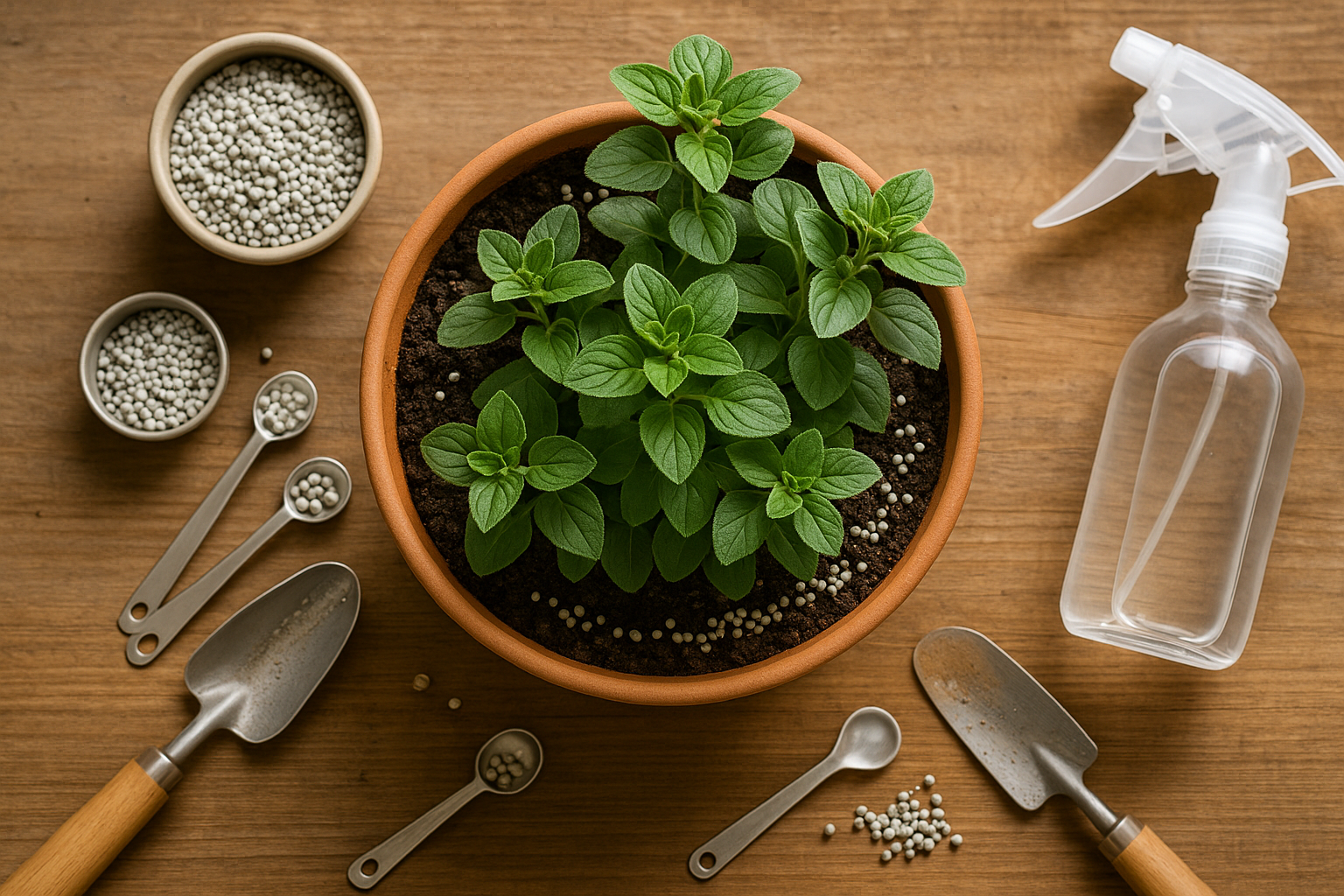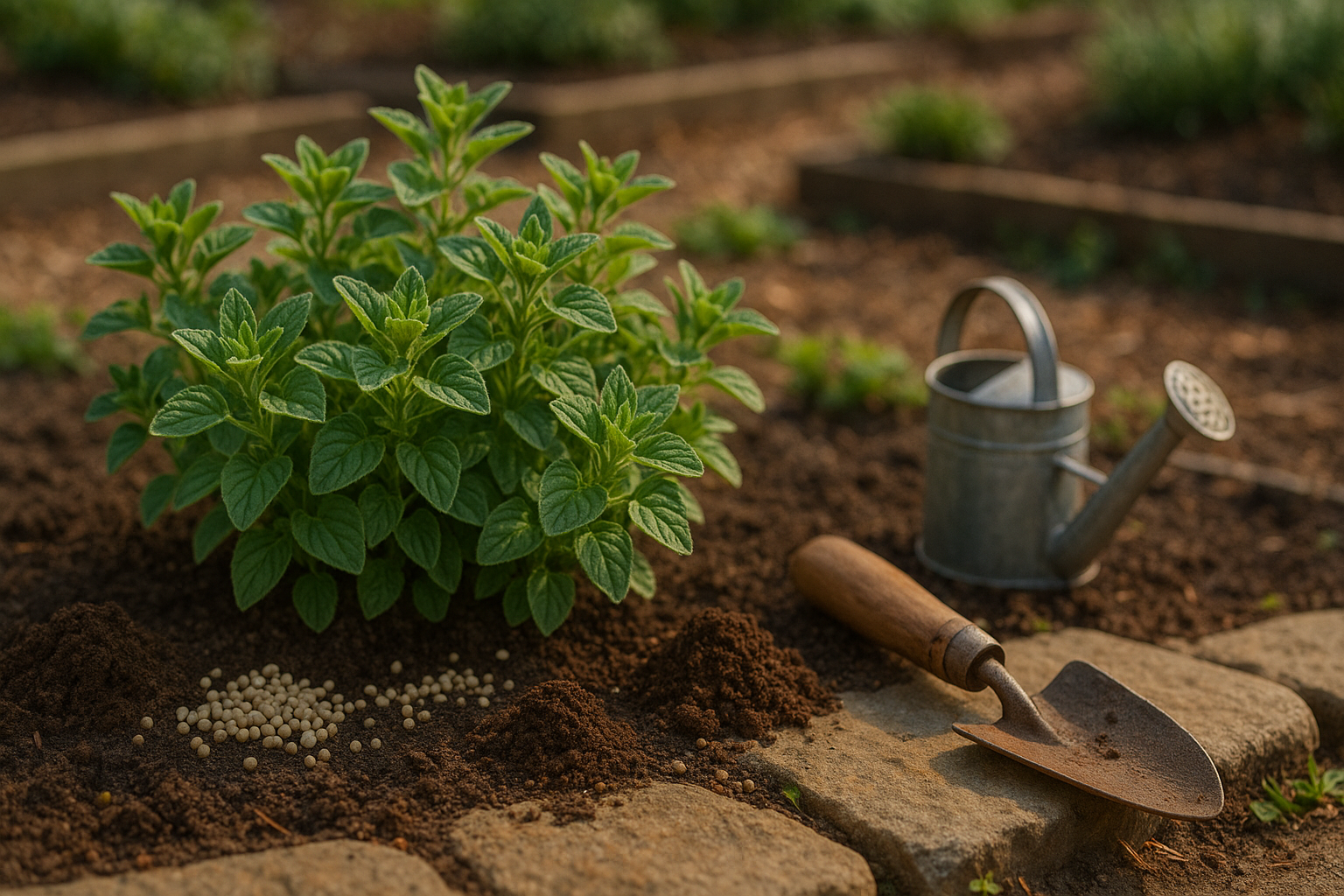Why Fertilizing Matters for Oregano Growth

Oregano thrives best in well-draining, moderately fertile soil and typically prefers slightly alkaline conditions with a pH between 6.5 and 7.0. Unlike some other herbs, oregano is relatively low-maintenance when it comes to nutrients, often growing well in poor or average soils; it actually produces more aromatic oils and richer flavor when a bit “hungry.”
However, this doesn’t mean you should ignore its nutritional needs altogether. Occasional, balanced fertilizing—especially if your soil is sandy or depleted—helps maintain steady growth, vibrant green leaves, and overall plant health.
A common misconception is that feeding oregano heavily will make it lusher and tastier; in reality, too much fertilizer, particularly high-nitrogen blends, can lead to leggy growth and dilute the characteristic flavor. The key is moderation: a light application of a balanced, all-purpose organic fertilizer in early spring is usually sufficient.
For example, in home gardens, incorporating compost or a slow-release granular fertilizer around the base of the plant just as new growth appears can provide ongoing nutrition without overwhelming the oregano. Always water after feeding and avoid getting fertilizer on the leaves, as this can cause burns.
By giving oregano just the boost it needs—without overdoing it—you’ll enjoy a plant that’s robust, resistant to disease, and packed with the bold flavors that make it a kitchen staple. Balanced feeding ultimately supports not just growth, but also the intensity of the oils that give oregano its signature taste, ensuring your recipes are as flavorful as possible.
When to Fertilize Oregano (Timing Matters)
Knowing when to fertilize oregano can make a real difference in the health and flavor of your plants. For outdoor oregano, the best time to fertilize is in early spring, just as new growth starts to appear—this gives the plant a boost as it wakes up from winter dormancy.
If your oregano needs a little extra help mid-season (around midsummer), you can add a light second feeding, especially if it’s been heavily harvested or if the soil seems depleted.
Indoor or potted oregano requires a slightly different approach. Since nutrients can leach out of containers more quickly, a gentle liquid fertilizer applied once in early spring and again in midsummer usually works well—but always go light, as heavy feeding can reduce your plant’s natural flavor oils.
Typically, oregano only needs to be fertilized once or twice a year. These herbs actually thrive on modest nutrition and can become leggy or lose flavor if overfed.
It’s important to skip fertilizing entirely if your plant is dormant (such as over winter), if it’s under visible stress from pests, disease, or environmental shock, or if you’re late in the growing season (after mid-August in cooler climates). Feeding at the wrong time can do more harm than good—encouraging soft, weak growth right before fall, for instance, can make your oregano vulnerable to cold snaps.
For best results, pair your fertilizing routine with well-drained soil and regular harvesting, keeping an eye on leaf color and vigor as your main guide. In short, a light hand and well-timed feeding go further than constant fertilizing when it comes to this hardy Mediterranean herb.
Choosing the Best Fertilizer for Oregano
When it comes to feeding your oregano, organic fertilizers are often the best choice—especially if you want lush, flavorful leaves for your kitchen. Organic options like compost, well-rotted manure, worm castings, or even fish emulsion slowly release nutrients, improve soil health, and encourage beneficial microbes without the harsh salt buildup that synthetic fertilizers can cause.
This natural approach is especially important for oregano, as its signature flavor can be diluted by too much nitrogen, which is common in synthetic formulas designed for heavy growth. Look for a balanced, low-nitrogen fertilizer—labels like 4-6-6 or 5-10-10 are typically a good fit—to support steady growth without compromising the taste and aroma of your herbs.
Liquid organic feeds can be applied every few weeks for a mild boost, while slow-release granules are handy for less frequent feeding and easy application around the base of the plant. Homemade compost is a gardener’s secret weapon; just mix in a handful every month or so, and you’ll not only feed your oregano but also improve your soil’s structure and water retention.
In addition to fertilizers, don’t overlook the power of natural soil amendments. Blending in a few handfuls of aged compost, a dusting of rock phosphate for phosphorus, or a sprinkle of wood ash for potassium can round out nutrient availability and help oregano thrive.
By focusing on organic and balanced nutrition, you’re supporting both the health of your plant and the rich, bold flavors that make fresh oregano a standout in any dish.
How to Fertilize Oregano Correctly (Step-by-Step)

Fertilizing oregano the right way keeps your plants healthy and flavorful without risking overfeeding. For in-ground oregano, wait until spring growth begins or after a light pruning. Then, lightly sprinkle a balanced, slow-release granular fertilizer (such as 10-10-10) around the base—about one tablespoon per plant—keeping the granules a few inches away from the stems to avoid burning.
Gently work the fertilizer into the top inch of soil and water thoroughly to help the nutrients reach the roots.
For potted oregano, use a liquid fertilizer at half the manufacturer’s recommended strength. Oregano prefers lighter feeding because excess nutrients can reduce its signature taste and stress the plant. Apply the diluted liquid around the outer edge of the container after watering, during periods of active growth or just after harvesting or trimming.
Too much fertilizer is risky, so always err on the side of too little—especially if you’re seeing healthy green leaves. To prevent fertilizer burn, make sure the soil is slightly damp before feeding, never fertilize dry plants, and avoid splashing fertilizer on the leaves.
Feed oregano once in early spring and perhaps again mid-summer if growth seems slow, but otherwise, let the plant thrive on its own. Oregano does best with minimal fuss.
Always check labels for safe use, and when in doubt, skip a feeding rather than risk harming your oregano. Healthy soil, good drainage, and bright sunlight are far more critical in keeping your herb patch productive than heavy fertilizing.
Recognizing and Solving Over- or Under-Fertilization Issues
Recognizing the signs of over- or under-fertilization can save your plants from long-term damage. Over-fertilized plants often show leaf burn—yellowing or browning at the edges—wilting despite moist soil, white crusts on the soil surface, or stunted growth. On the flip side, under-fertilized plants can appear lackluster, with pale green or yellow leaves starting from the bottom, slow growth, and weak stems.
If you notice symptoms of over-fertilization, flush the soil with plenty of clean water to wash away excess salts—run water through the pot until it drains freely, and repeat if needed. Pause fertilization for a few weeks to let the plant recover, monitoring its health closely.
For under-fertilization, try gradually increasing your feeding schedule—don’t overcorrect and risk creating a new problem. Use a balanced fertilizer at a lower-than-recommended strength to see how your plant responds.
If you’re unsure which problem you’re facing, a simple soil test kit from a garden center or nursery can be a game-changer. These kits check for nutrient excesses or deficiencies so you can make targeted corrections instead of guessing.
Consider adjusting the fertilization schedule based on your plant’s growing season—the needs are typically higher in spring and summer and much lower in winter. Always read fertilizer labels and follow instructions, but remember every plant, pot size, and home environment is different, so attentive observation is key.
In severe cases of either over- or under-fertilization, don’t hesitate to give your plant a break from fertilizer for a few weeks. This allows it time to recover and regain vigor before resuming a gentler routine. Regularly inspecting leaves and soil will help you catch problems early, making small tweaks before things get out of hand.
FAQs and Extra Tips for Healthy Oregano Plants
Many gardeners wonder how often and when to fertilize oregano for the best growth. Oregano is a Mediterranean herb that actually thrives in moderately poor soil, so fertilizing too often can reduce its natural flavor and vigor.
As a rule of thumb, fertilize oregano sparingly—once in early spring as new growth appears, and again lightly in midsummer if the plants seem sluggish or pale. A balanced, slow-release organic fertilizer is ideal. Avoid high-nitrogen fertilizers, as these encourage lush but flavorless foliage. For most home gardens, one or two light feedings each season are enough.
Additional Tips for Boosting Oregano Health
- Mulch around plants with a thin layer of straw or chopped leaves to keep the roots cool, retain moisture, and block weeds. However, avoid heavy, wet mulches that can suffocate roots or worsen fungal problems.
- Rotate your oregano by moving it to a different spot each year if planting in garden beds—this helps prevent soil-borne diseases and balances nutrients.
- Good drainage is critical; oregano will struggle in soggy or compacted soil. Amend heavy clay with sand or organic matter, or plant in raised beds or pots.
- For extra-flavorful oregano, try trimming plants regularly to encourage new, tender leaves—these have the best taste.
In summary, oregano really prefers minimal fuss. Overfeeding can actually harm both the plant and its savory, aromatic punch. With light, thoughtful fertilizing, wise garden care, and attention to the natural needs of this hardy herb, your oregano will flourish and bring robust flavor to your kitchen with hardly any intervention.
Remember: when it comes to feeding oregano, less is truly more.
